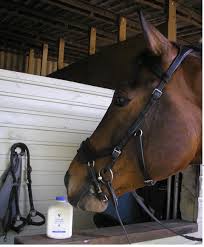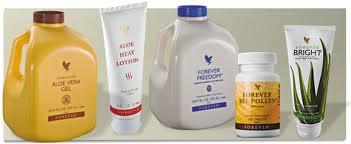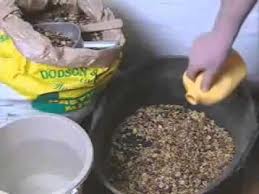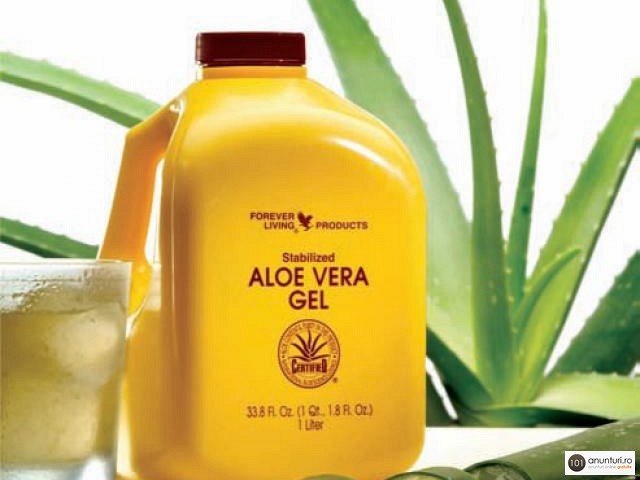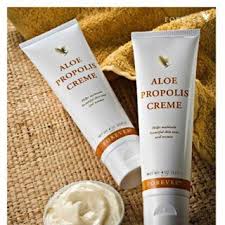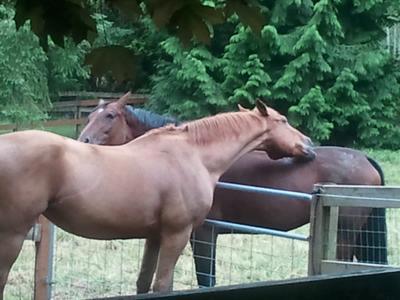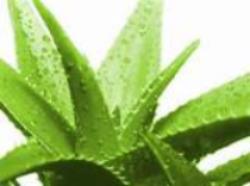ALOE VERA USES FOR HORSES
(A-Z)
This is a brief guide to using Aloe Vera products to treat the health problems your horse may experience. Unless you are absolutely sure what is wrong with your horse and are completely confident you can treat it yourself, you should always seek professional help.
ARTHRITIS
Aloe Vera blended with glucosamine, chondroitin and MSM is an excellent and very safe product to give to horses and ponies suffering from joint problems. The Aloe Vera will increase the absorption of the chondroprotective agents thus maximising their benefits. Dosage: 60-250mls per day.
DIGESTIVE SYSTEM
Aloe Vera can prove very beneficial in helping conditions of the digestive system, particularly where inflammation is involved. Conditions such as stomatitis, gingivitis, and oral ulceration can all be helped with Aloe Vera. The most useful preparations for use in the mouth are those that are spray based and the gelly. More serious conditions such as vomiting and diarrhoea also often respond to oral administration of Aloe Vera Gel combined with bland diets. Always seek veterinary advice if symptoms persist or get worse.
EAR AND EYE PROBLEMS
One of the most common ear conditions is otitis externa where infection and inflammation develop in the vertical and horizontal ear canals. These are often mixed infections of mites, bacteria, fungi, and yeasts and may also involve foreign bodies such as grass seeds. Aloe Vera gel, gelly and in combination with bee propolis can be very useful in treating this condition. Always ensure that a vet sees the ear so that causes such as foreign objects and tumours can be dealt with if present. Eye conditions are potentially more serious and should always be examined by a vet. A dilute solution of Aloe Vera can be helpful for conjunctivitis and keratitis.
ELDERLY HORSES AND PONIES
The Aloe Vera gel is an excellent preparation for our more mature equine friends. It acts as a general ‘pick me up’ and helps keep all systems, particularly an immunological system in peak performance. We recommend dosage of 100-120mls per day. Each year vets are called to examine mature horses from January onwards because they are losing weight and showing signs of not coping. When these are examined and blood tested, many show signs of poor digestion and liver/kidney problems usually associated with the ageing process. These animals need a well-balanced, appetising and nourishing diet, protection from the weather, check teeth and worm regularly. As animals age they will develop arthritis and therefore we also recommend they are given Aloe Vera blended with glucosamine, chondroitin and MSM daily.
GASTRIC ULCERS
These are most commonly present in over 90% of race horses in training. Since the cause is mainly associated with the way the horses are managed this needs to be corrected first where possible. Aloe Vera gel at a rate of 250mls daily added to the food is an excellent supplement to correct management.
GRASS SICKNESS
This disease is most commonly seen in horses during the spring and in summer when they are at grass. Although the cause remains unknown, it is believed that a neurotoxin present in the grass damages the autonomic nervous system, which controls the movement of the digestive system. In the past most cases were put to sleep because they either were wasting away or suffered from colic. Recently six cases were treated with up to four litres of Aloe Vera gel per day. Initially this was either given by a vet via a stomach tube or by owners giving small amounts at regular intervals throughout the day. All the horses treated in this way made a full recovery.
HEAD SHAKING
This is becoming an ever-increasing problem in our horse and pony population and is often difficult to control and can be habit forming. There are a number of causes but one of the most common is seasonal allergy to pollen. Rubbing Aloe Vera gelly into the nostrils twice daily, or better still, the inhalation of 10mls of Aloe Vera spray through a nebuliser and facemask can prove helpful. Always add 120 to 250mls Aloe Vera gel to the diet starting as early in the year as possible, reducing to a maintenance dose of 60mls during the winter months. If started early enough, adding bee pollen tablets to the diet can also help. The amount required can vary from 8 to 20 per day, depending on the weight of the horse and the severity of the condition.
IMMUNE SYSTEM
A number of animal diseases have their origin in the immune system. The most common are asthma, hay fever, rhinitis, arthritis, and lupus. The oral administration of Aloe Vera can be useful in chronic immunological problems. For horses that show a lower than normal white blood cell count, administering 200ml per day for 3-4 weeks can improve white blood cell counts.
LAMINITIS
It is very important to enlist the help of the pony’s veterinary surgeon and farrier. With correct management Aloe Vera products can help. To help prevent the reoccurrence of this, problem ponies need to be kept on 60 to 120 mls of Aloe Vera gel per day depending on how susceptible they are. Strict control of the diet and regular exercise are essential. If the pony has an acute attack then the vet and farrier should be called immediately and the pony given 200mls of Aloe Vera gel by mouth daily. This level should be maintained until the symptoms improve when it can be reduced to 120mls. When recovered the pony should be kept on 60mls daily. Together with correct management and assistance from a vet and farrier Aloe Vera can help control this problem in 80% of cases. This result will not be achieved with Aloe Vera alone.
MUD FEVER
Mud Fever is a dermatitis, which particularly affects the pasterns of both ponies and horses. It does not always have to be associated with muddy conditions. There are frequent cases in the summer when conditions are dry. The lesion consists of scabby areas particularly on the backs of the pastern, which often develop into areas of moist eczema. To help these areas heal; clean them off and break down the scabs gently with Aloe Vera spray before finally applying Aloe Vera gelly. In severe cases use Aloe Vera spray and Aloe Vera gelly 4-6 times daily. Too much washing creates dampness, which can make the condition worse so it is advisable not to over wash. If the area appears very infected, use an Aloe Vera with propolis cream instead of the jelly.
NAVICULAR DISEASE
This is a complex condition because the cause is often related to conformation, shoeing practices and the type of work the horse has done. The picture is further complicated because not only is it bilateral but also it is often present as degenerative joint disease in other joints and today is often referred to as distal limb polyarthritis (D.J.D.) navicular syndrome. Aloe Vera blended with glucosamine, chondroitin and MSM can help if it is combined with corrective and often surgical shoeing (bar shoes). When combined with corrective shoeing use 250mls of Aloe Vera blended with glucosamine, chondroitin and MSM, given as 125mls twice daily until the lameness improves. This should take about 3 months, after this time keep them on a maintenance dose for the rest of their lives of 120mls per day.
OSTEOARTHRITIS
This condition is often referred to as degenerative joint disease. Arthritis can occur through age-related wear and tear of a joint or it may be as a result of repeated trauma. Whatever the cause, the end result is changes to the joint cartilage, the synovial membrane and the fluid it produces as well as damage to the bone under the joint cartilage. In horses particular names are given to different areas where arthritis occurs. So you will often hear people referring to ‘ring bone’, ‘spavin’, ‘pedal osteitis’ and ‘navicular disease’. These horses require a combined integrated approach to keep them comfortable and to try and hold back the progression of this disease. This usually involves support for the limb, corrective farriery, rest, physiotherapy, complementary preparations and sometimes drugs. Some cases respond beneficially to the addition of 250mls of Aloe Vera gel to their diets daily. As they improve this can be reduced gradually to a maintenance level of 60mls per day. Even greater benefits can be achieved if similar volumes of Aloe Vera blended with glucosamine, chondroitin and MSM are given instead of plain Aloe Vera gel.
RAIN SCALD
This is a condition seen particularly on the backs of horses left out during wet weather. Any area where water accumulates on the skin allows multiplication of spore-forming bacteria, called Dermatophilus Congolensis. This damages the epithelial layer of the skin, allowing secondary opportunist bacteria (such as Staphylococci and Streptococci) to also invade, making the infection worse. Eczema-like lesions develop, similar to ‘mud fever’ of the lower limbs. Always deal with the cause first and bring the horse in from the wet weather. Wash off areas, which are essentially similar to moist eczema (often scabby and matted hair), with a medicated scrub or Aloe Vera soap. Dry very well. Spray lightly with Aloe Vera spray and rub in Aloe Vera gelly. For the first five to seven days expect the ‘healing crisis’, after which the lesions should heal quickly. Any persistent areas with secondary infection can be encouraged to heal using an Aloe Vera with propolis cream rub. Do not repeatedly wash these areas because it will only make the condition worse.
RINGWORM
Spray all areas with Aloe Vera spray. Apply Aloe Vera gelly to the infected areas of the skin daily as often as you can. Give Aloe Vera gel in the food each day. In persistent cases change from the Aloe Vera gelly to the Aloe Vera with propolis cream. Ringworm can be transmitted to humans, so take care when handling animals with this disease.
SKIN PROBLEMS
Aloe Vera is an excellent preparation to use for skin conditions such as allergies, abscesses, fungal infections, pyoderma, and many types of dermatitis. The oral gel can be given in the food, and the topical varieties applied directly to the skin. Aloe Vera will decrease inflammation as well as helping to remove dead cells and discharges. It will encourage a suitable environment for regeneration of cells so aiding the healing of wounds.
SWEET ITCH
While sweet itch must be treated conventionally the dermatitis does respond well to Aloe Vera. Firstly wash the area with Aloe Vera soap, dry well, spray the area lightly with Aloe Vera spray and finish off by applying Aloe Vera gelly or Aloe Vera with propolis cream rub. Adding Aloe Vera gel to the diet would also help. Sweet Itch is an allergic dermatitis set off by biting midges. The dermatitis is easily controlled with Aloe Vera products; the problem is preventing the midges from attacking the horse/pony and the self-mutilation inflicted by the patient. Diluted Aloe Vera cleanser and an Aloe Vera heat rub with eucalyptus can help in preventing the insect attacking the animal.
TENDON INJURIES
Competition horses frequently strain tendons. This results in an acute inflammatory reaction causing damage to the collagen fibres. It is very important that this inflammatory reaction is limited as soon as possible. Achieve this using cold, pressure, analgesics and rest, (Cold hose the limb, apply frozen crushed Aloe Vera gel in a towel followed by massaging with an Aloe Vera and MSM gel; then a padded pressure bandage and allow plenty of rest). This procedure should be repeated 4-6 times a day while this acute inflammatory condition is present. After a few weeks when this acute heat-forming reaction has subsided then an Aloe Vera heat rub with eucalyptus can be applied. Also add Aloe Vera gel, or Aloe Vera blended with glucosamine and chondroitin and MSM, to their diets.
WOUNDS
If the wounds are not suturable, excellent healing can be achieved by first cleansing the wound with diluted Aloe Vera soap, spraying with Aloe Vera spray and then dressing the wound with Aloe Vera gelly. Most wounds heal up to 35% quicker than when using conventional preparations resulting in less scaring and more hair re-growth.

